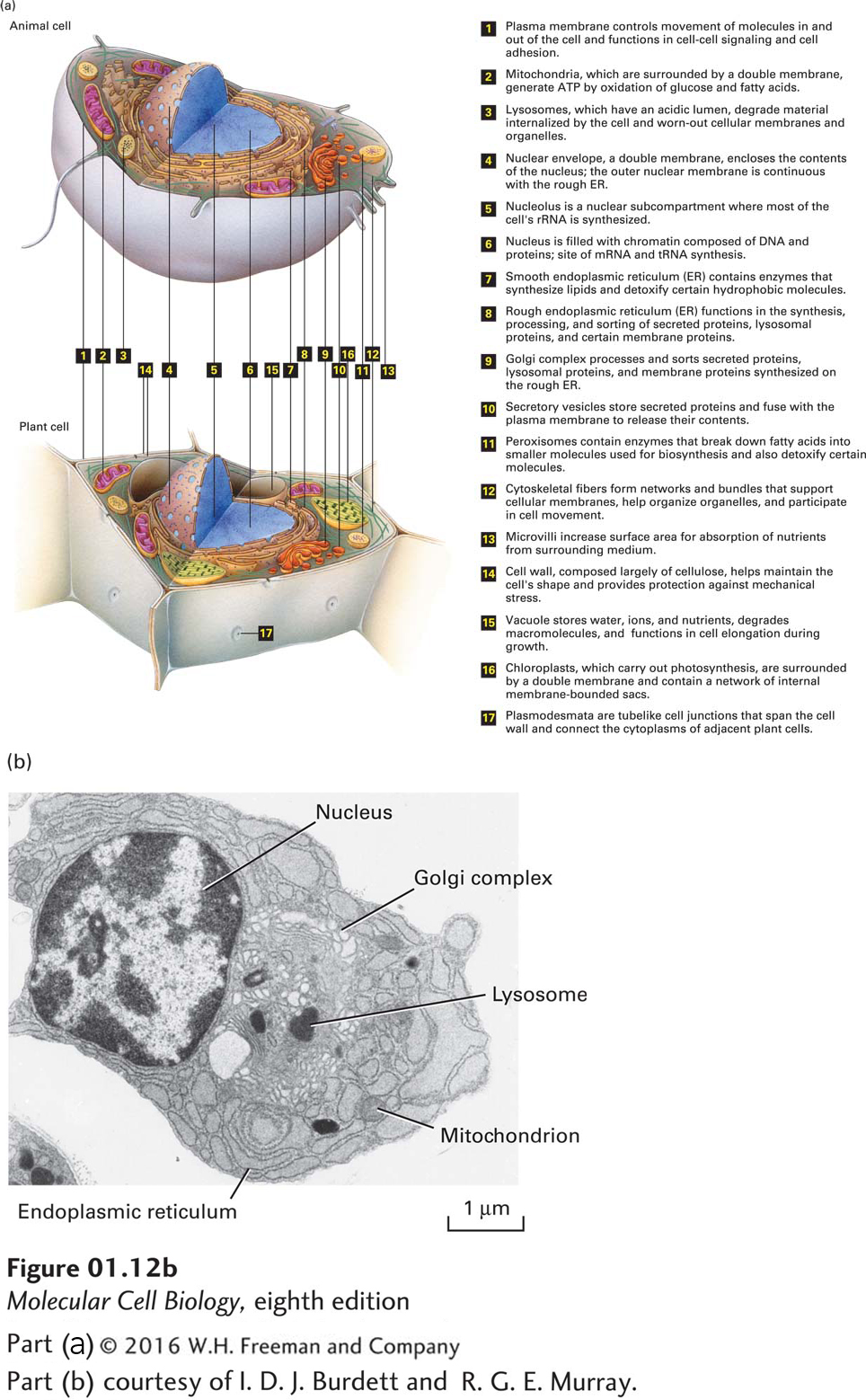1.3 Eukaryotic Cell Structure and Function
Eukaryotes comprise all members of the plant and animal kingdoms as well as protozoans (proto, “primitive”; zoan, “animal”), which are exclusively unicellular and include fungi and amoebae. Eukaryotic cells are commonly about 10–
Eukaryotic cells, like prokaryotic cells, are surrounded by a plasma membrane. However, unlike prokaryotic cells, most eukaryotic cells (the human red blood cell is an exception) also contain extensive internal membranes that enclose specific subcellular compartments, the organelles, and separate them from the cytoplasm (Figure 1-12). The cytosol, the organelle-

All eukaryotic cells have many of the same organelles and other subcellular structures. Many organelles are surrounded by a single phospholipid membrane, but the nucleus, mitochondrion, and chloroplast are enclosed by two membranes. Each organelle membrane and each space in the interior of an organelle has a unique set of proteins that enable it to carry out its specific functions, including enzymes that catalyze requisite chemical reactions. The membranes defining these subcellular compartments contain proteins that control their internal ionic composition so that it generally differs from that of the surrounding cytosol as well as that of the other organelles. Here we describe the organelles common to all eukaryotic cells as well as several that are found only in certain types of eukaryotes. We begin with the proteins that give eukaryotic cells their shapes and organize the organelles.